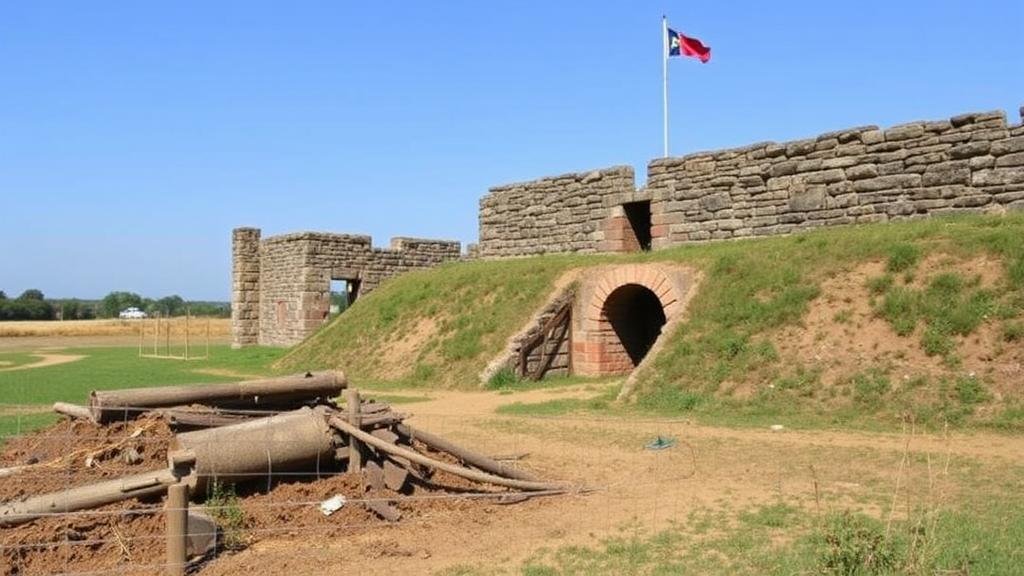Exploring Historic Fortifications for Buried Ammunition and Relics
Exploring Historic Fortifications for Buried Ammunition and Relics
The study of historic fortifications offers a unique lens into the military history of various cultures, their defensive strategies, and the remnants of warfare. This article focuses on the exploration of buried ammunition and relics within these structures, highlighting the significance, methodologies, and findings associated with such endeavors.
Historical Context of Fortifications
Fortifications have been crucial in military architecture since ancient times. These structures, often built to protect territories, serve as a testament to the military ingenuity of their times. Notably, Continuous Line Fortifications, such as those developed by Vauban in the 17th century, showcase advances in design to withstand sieges.
- Example 1: The Citadel of Quebec, constructed in the 1690s, provides insight into both French and British military architecture.
- Example 2: Fortification systems in the Roman Empire, including Hadrians Wall, illustrate the importance of territorial defense.
Buried Ammunition: A Tactical Perspective
Buried ammunition within fortifications can reveal much about past military strategies, logistical planning, and the socio-political climate of the time. These artifacts can include:
- Optical devices such as lenses and telescopes
- Explosive materials and munitions
- Small arms and artillery shells
Understanding the usage and distribution of these materials offers insights into battles fought and the operational behaviors of military forces.
Methodologies for Exploration
Various methodologies exist when exploring historic fortifications for relics. These include:
- Ground Penetrating Radar (GPR): A non-invasive technology that uses radar pulses to image the subsurface, allowing researchers to map buried features without excavation.
- Magnetometry: Uses magnetic field variations to detect metallic objects buried in the ground.
- Excavation: Once potential sites are identified, controlled excavations are conducted to carefully uncover artifacts.
These methods not only ensure the preservation of findings but also enhance the accuracy of identifying and dating artifacts.
Case Studies of Notable Excavations
1. Fort McHenry, Baltimore
Fort McHenry, famous for its role in the War of 1812, has undergone various archaeological surveys since the 1990s. Excavations have uncovered numerous artifacts, including cannonballs and uniform buttons, that provide insights into the daily lives of the soldiers stationed there.
- Significant Discovery: In 2014, researchers discovered a cache of ammunition that prompted a reevaluation of the forts defensive measures during the British bombardment.
2. The Bastille, Paris
The Bastille, known primarily for its infamous prison role, has been subject to archaeological study post-demolition in the late 18th century. Excavations have revealed an array of military equipment and personal items that belonged to the guards, enhancing our understanding of pre-Revolutionary Frances security needs.
- Critical Insight: The recovered arms and munitions provided evidence of the forts preparedness for insurrections, reflecting the political tensions of the era.
Challenges in Researching Buried Relics
Researching buried ammunition and relics in historic fortifications presents several challenges:
- Legal Restrictions: Many sites are protected by laws that restrict excavation activities.
- Environmental Factors: Natural erosion and moisture can lead to degradation of artifacts over time.
- Funding and Resources: Archaeological projects often require substantial financial backing, which can limit research potential.
Conclusion: Preserving History through Exploration
The exploration of buried ammunition and relics within historic fortifications is not just an academic endeavor, but a vital component of preserving and understanding our collective history. As evidenced by various case studies, these artifacts contribute to our knowledge of military strategies and everyday life during significant historical periods. Future studies that utilize advanced technology and foster interdisciplinary collaboration will be essential in unearthing more of these invaluable insights.
Actionable Takeaways:
- Encourage community involvement in archaeological programs to promote awareness and appreciation of historical preservation.
- Advocate for funding and resources to support ongoing archaeological efforts at significant fortification sites.



